Wet Basement Home Inspection with previously performed foundation repairs but still leaking during heavy rains
This video documents a wet basement home inspection I did a while back with Detailed Home Inspections with foundation damage repairs that were previously performed, but the walls are still leaking during heavy rains. Even though foundation damage repairs had been performed, no one addressed the cause of the water leakage into the basement and the foundation wall movement in the first place. They just reenforced the walls and installed a sump pump. While standing on the outside, before even going into the basement, a quick visual inspection of the home’s exterior soil grading, and pitch of the concrete pads towards the exterior walls of the home, showed that there would likely be some water staining on the inside of the basement. There were some large holes on the left side of the home around the chimney and the exterior foundation wall. These holes were rounded and appear as if water had been running down these holes and sitting up against the foundation.
From this point, the water that was sitting in the hole between the chimney and the foundation wall of the home would freeze during the wintertime, and frost wedge or basically freeze itself against the foundation wall of the home. Water expands when it freezes. Think of when you freeze a can of soda by accidentally leaving it in your freezer for too long. The can might burst in there because of the expanding liquid when it freezes. The same happens with the water that sits down against your foundation walls. And over time, the frozen water will melt again, re-work itself into the new wedges that the previous freezing action had made, then start the process all over again.
So basically, over a period of several years, the long-term water accumulation against the foundation walls was continuously freezing and pressing against the foundation wall, then thawing, settling in further, and repeating the freeze process.
The soil is generally flat or pitched back toward the home on the left side and the rear side of the house. This also does not allow for the water the move away from the house. We want our house and foundation to stay as dry as possible, which is why the soil around the house should generally slope away from the house at a rate of 1 inch per foot for several feet, at least 6 feet, to cast water away from the house and not cause a wetness problem in the basement or the crawlspace, or in the in-slab ducts if you are living in a slab-on-grade home. All downspouts should also be discharging away from the house, at least 6 feet, and into a bed of soil that is also sloped away from the home.
When re-grading the soil away from the house, it is best to use clean fill dirt, and due to the amount of dirt needed in most cases, it makes more sense to order a truck load of dirt instead of just buying bags of topsoil to fill in low spots around the house. Clay soil is very dense and ideal to use for this improvement due to its water impermeability, as opposed to topsoil (which easily washes away) or mulch (which retains additional moisture).
Sometimes, if the soil level needs to be raised up so high that it will cover over the basement windows, you will need to install window wells around these windows in order to keep the soil back from sitting against the window.
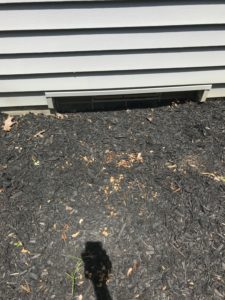
You will need to measure the width of the window and the height of it, and make sure that the window well is sized properly, just a couple of inches wider than the window opening hole, and high enough that the newly installed window well area wall comes up higher than the soil.
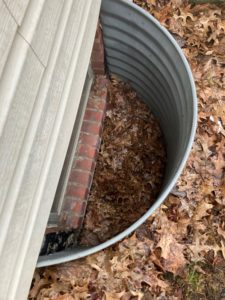
After installing window wells, one should also consider covering the window well opening that was created, with a plastic window well cover to minimize water leakage into the basement by shedding the water away. Even if the window is made of glass block, exterior soil should never sit against the basement windows, to prevent wet soil from holding moisture against the window which may potentially infiltrate through the window casing or glass block and mortar joints of the window, resulting in basement/crawlspace dampness. Avoid accumulating soil against the windows such as shown in the picture below by installing window wells securely around the basement windows and covering them with plastic window well covers to prevent possible basement dampness in the future, and damage or rusting to your basement window which deteriorate the frame and allow pest entry into the basement space.
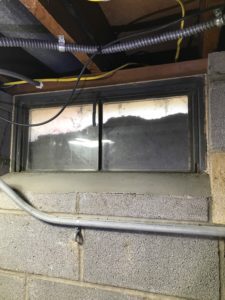
The last issue noted in this video is a patio concrete slab that is cracked, sunken and sloped toward the rear crawlspace wall of the house. You can see that all the sediment and soil is washed up against the wall of the home, because water routinely travels towards the house and carries all the debris with it. In a perfect world, that patio slab would have to be re-leveled and sealed against the foundation, or most likely re-poured and pitched away from the house. The below picture is not from the inspection video above, but this shows an extreme example of just how large the gaps between the foundation walls of the house and the exterior concrete driveway or walkway pads can become. This can lead to eventual basement water leakage and even the need for foundation repairs with so much water driving against the exterior during rains.
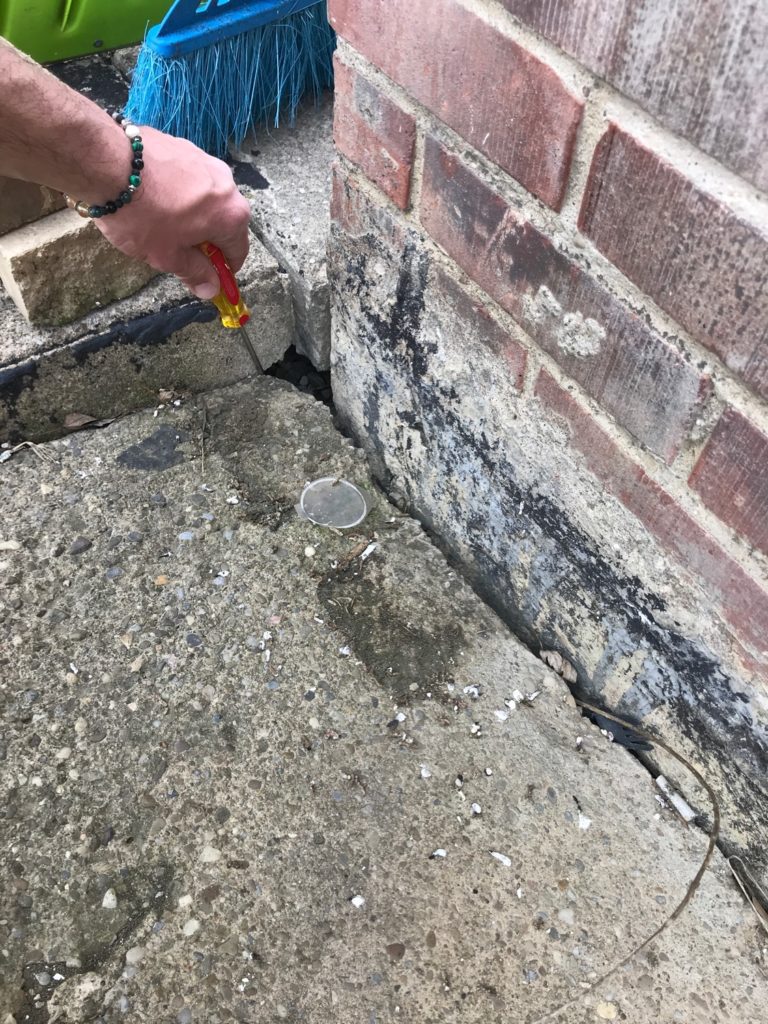
So, you can see in a home inspection that even though the home has had previously performed foundation damage repairs, there are still many addressable improvements that should be performed to stop the water from sitting around the house over the years.
Check out the most common wet basement issues for more info and helpful tips to keep your foundation as dry as possible. If you live in the Cleveland, Ohio area, consider hiring us for a wet basement inspection and a camera scope of your underground storm drains and downspout drains to determine the cause of your leaky basement or crawlspace.
For more information on the safest way to clean out blocked gutters without the need for a ladder, (even though I still use one in the video,) check out my other article and video at: https://wetbasementinspections.com/2022/05/29/how-to-clean-blocked-gutters/
Thanks for reading and come back often for real original reviews of wet basement home inspections and foundation damage, and the obvious actions that anyone can take to mitigate their wetness problems.
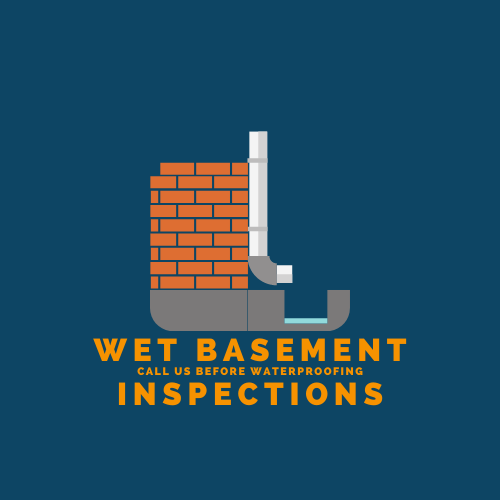
This is the perfect blog for everyone who hopes to understand this topic. You understand so much its almost hard to argue with you (not that I actually would want toÖHaHa). You definitely put a new spin on a topic which has been written about for years. Excellent stuff, just excellent!
I was very pleased to uncover this web site. I want to to thank you for your time due to this fantastic read!! I definitely appreciated every bit of it and I have you bookmarked to look at new things on your website.